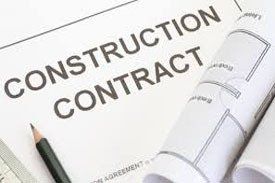Should You Use an Open Book (Cost Plus) Construction Contract?

Should You Use a Cost Plus Construction Contract?
There are two predominant types of custom home building contracts – fixed price and cost-plus. With a fixed price contract, you theoretically know what your house is going to cost on the day you sign the contract. We say theoretically because experience has taught us that most custom homes get changed many times from the original plan. Also, most custom builders include allowances for various construction items in their fixed-price contracts. If you exceed the allowance amounts, your cost will go up. (Allowances are discussed here).
With a cost-plus contract you agree to pay the builder a markup percentage applied to the builder’s costs to construct the house.
Why would anyone consider using a cost-plus contract? There are several reasons:
- Most builders will accept a somewhat lower gross profit margin on a cost-plus contract as compared to a fixed price contract because their estimating risk is greatly reduced. The more unique or complex your home will be, the greater the estimating risk the builder faces.
- Custom homes are inevitably revised in the field to some extent, regardless of the skill of the architect or designer. Cost plus easily accommodates field changes without requiring extensive change orders and/or contract renegotiation.
- Cost plus is the preferred way to manage complex addition and remodeling projects that are inherently difficult to budget – in fact many reputable builders will not take on high-end renovation projects on a fixed price basis.
- Reducing the time to groundbreaking. Customers often want to get a project under contract so that planning, financing and permitting can begin right away, even when many of the project cost details remain undecided. Cost plus can help shed weeks or even months out of the project timeline.
As a savvy homebuyer, you may think, “this is simple – I will just ask three reputable builders to tell me what their markup percentage will be on a cost-plus contract, and I’ll choose the one with the lowest markup percentage”.
Unfortunately, it’s not that simple, because builders in our market use different definitions of “costs” to which they apply the “plus”. For example, some builders include an allocation of project manager salaries, markup in their employees’ labor costs, labor burden (payroll taxes, worker’s compensation insurance, etc.) and/or an allocation of their general overhead in their definition of the cost base. There is nothing inherently right or wrong about any of these methods – the problem is it makes it very difficult for the consumer to get an apples-to- apples comparison.
If you prefer to build under a cost-plus model, it is important that you establish which costs will be included in the base. One solution is to ask a few quality builders to quote a markup percentage on a cost-plus contract, with the cost component defined as follows:
- Direct payments to suppliers and subcontractors
- Employee direct labor (at the builder’s cost without markup or labor burden)
- A fixed budget for the direct labor dollars that will be charged to the job
- No allocation of project manager or supervisor salaries
- No allocation of general overhead
Once all the builders are working from the same base for costs, the comparison of their markup percentages becomes more meaningful.
There are several other things you should ask your builder before entering a cost-plus contract:
- Will they provide a detailed cost estimate as an exhibit to the construction contract? A good builder will go through the same estimating process regardless of whether they are bidding on a fixed price for cost-plus contract, and should be willing to provide you with this information.
- Does the builder have robust systems in place to track which costs should be applied to your job? A builder must be able to accurately accumulate, document and report the actual costs incurred on your project. Experienced in-house accounting professionals are necessary to accurately assign costs in a cost-plus environment.
- Ask the builder for several references from cost-plus customers and take the time to talk to these customers about their experience.
- How does the builder deal with change orders in a cost-plus setting? Theoretically, there is really no need for change orders with cost-plus, but you should confirm that any changes to the project scope and specification will be subject to the same markup percentage. Make sure that the base contract markup percentage will also apply to change orders.
- If you will be financing your construction costs with a bank, how will cost plus bills be reconciled with the traditional draw schedule concept favored by bank lenders? Your builder should contact your lender to determine if their system will accommodate a cost plus contract and how the draw schedule would work.
A properly structured cost-plus contract with a reputable builder is a viable alternative for the savvy custom home consumer. By following the suggestions in this guide, you can make an more informed determination about which builder is offering the best price. Of course, price is only one part of the value equation for a successful custom home building experience. The best builders are always busy and don’t resort to “lowball” or deceptive cost-plus bids just to get your signature on a contract. At Turnstone Custom Homes our goal is to provide every customer with the best value and a lifetime of carefree enjoyment.















